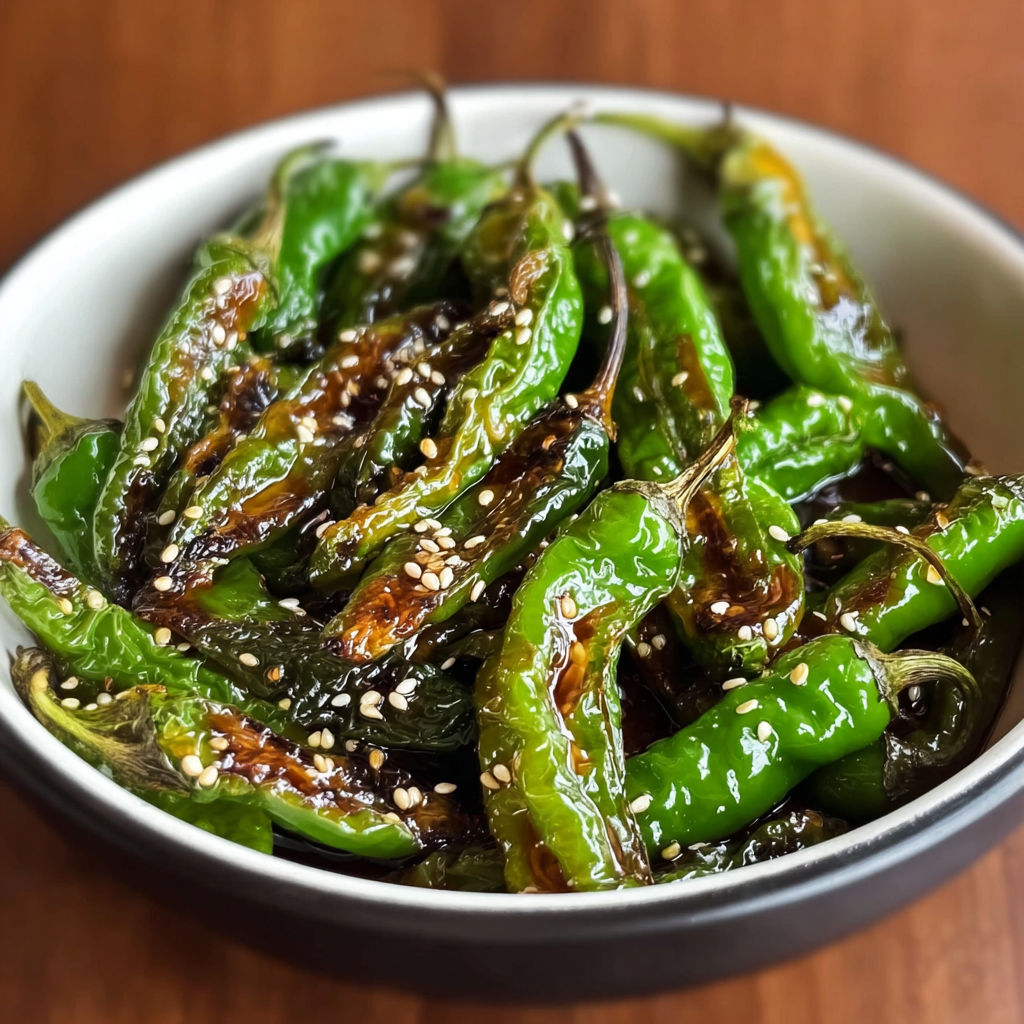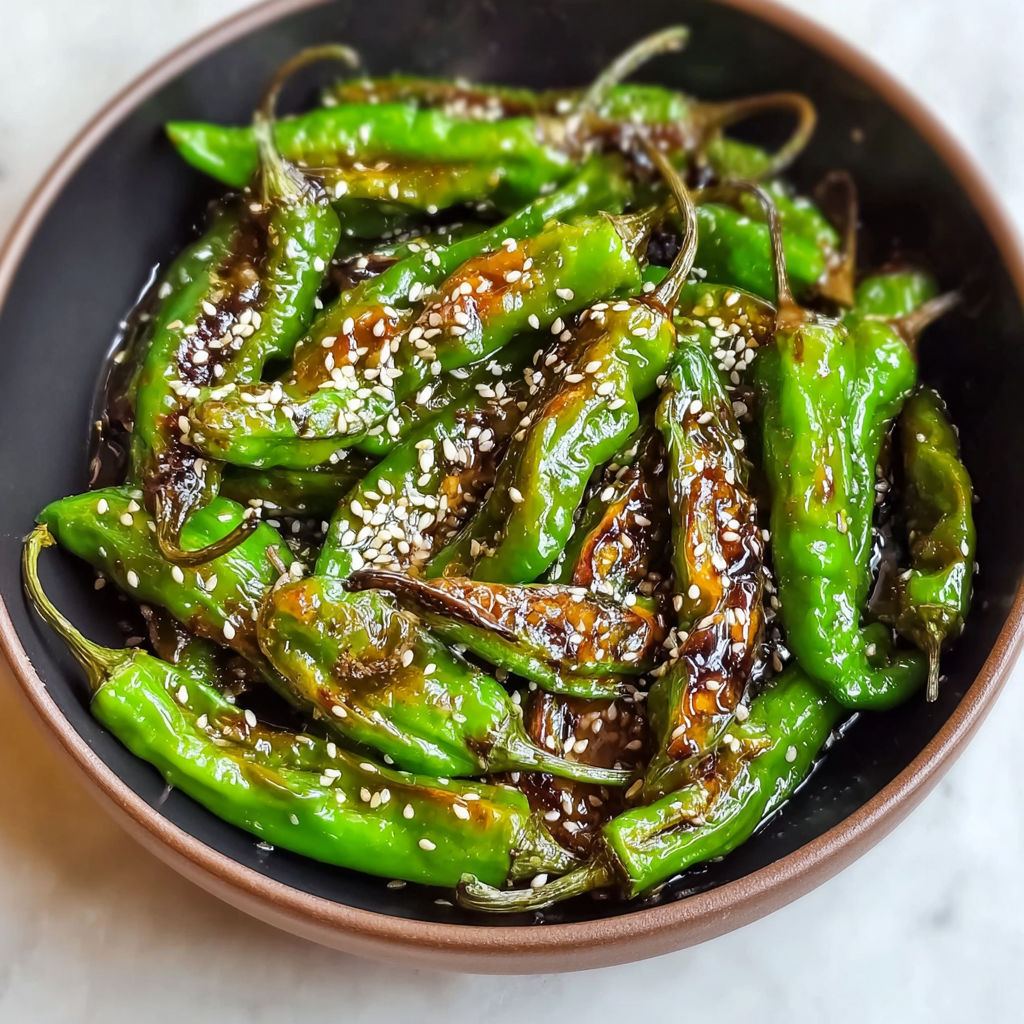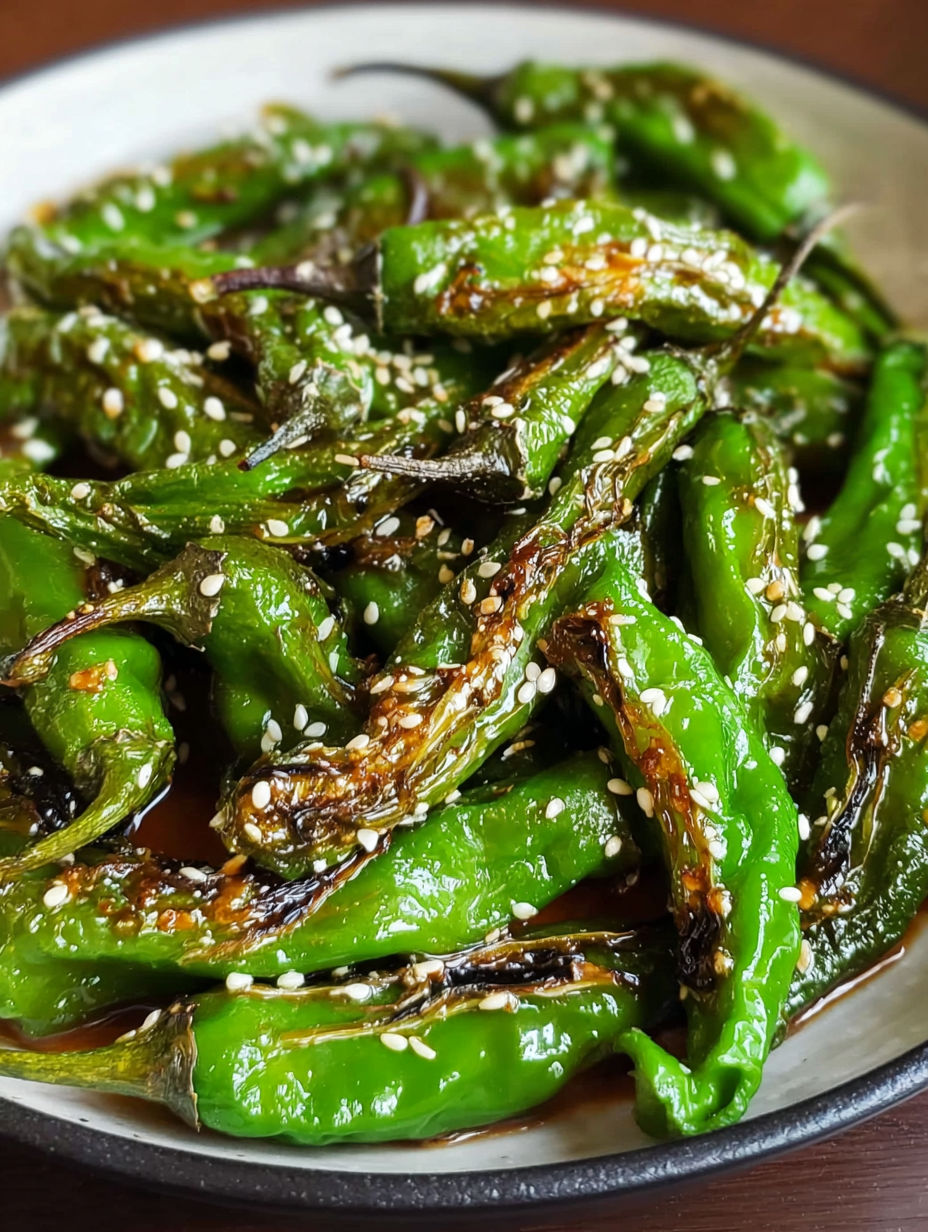 Pin
Pin
This blistered shishito pepper recipe brings Nobu's famous restaurant appetizer right to your kitchen table. The combination of garlic, soy and subtle heat transforms these mild peppers into an addictive treat that disappears faster than you can make them.
I first made these peppers after visiting Nobu and becoming obsessed with their perfect texture and flavor. After several attempts to recreate that magic at home, this recipe finally captured that restaurant-quality taste that now makes regular appearances at our dinner parties.
Ingredients
- Shishito peppers Fresh peppers with smooth, firm skin ensure the best blistering and flavor
- Roasted sesame oil Creates the foundation of authentic flavor cannot be substituted with regular oil
- Garlic Fresh cloves provide aromatic depth that powder simply cannot match
- Rice vinegar Adds brightness without overwhelming acidity like other vinegars might
- Reduced-sodium soy sauce Controls saltiness while adding essential umami
- Sriracha sauce Provides gentle heat that builds rather than overwhelms
- Agave syrup Balances the heat with subtle sweetness better than sugar
- Toasted sesame seeds Adds textural contrast and visual appeal to the finished dish
How To Make Nobu Shishito Peppers
- Prepare ingredients
- Gather everything before starting since this recipe moves quickly. Rinse peppers thoroughly but ensure they're completely dry before cooking to achieve proper blistering.
- Heat the oil
- Warm sesame oil in a large skillet over medium heat until it shimmers but doesn't smoke. This temperature is crucial for properly developing flavor without burning.
- Sauté garlic
- Add finely chopped garlic to the hot oil and cook for exactly one minute, stirring constantly. Watch carefully as garlic can go from perfectly golden to bitter and burnt in seconds.
- Blister the peppers
- Add shishito peppers to the skillet and cook for 4-5 minutes with occasional stirring. Look for darkened blisters on multiple sides and slight softening but maintain some structure.
- Add sauce ingredients
- Pour in rice vinegar, soy sauce, Sriracha and agave syrup, stirring quickly to coat each pepper evenly. Allow the sauce to reduce slightly and become glossy over 2-3 minutes.
- Garnish and serve
- Transfer immediately to a serving dish while still hot and sprinkle generously with toasted sesame seeds. Serve right away for optimal texture and temperature.
My absolute favorite part of this recipe is the roasted sesame oil. I learned through multiple test batches that this single ingredient creates that signature Nobu flavor that regular sesame oil just cannot replicate. The first time I served these at a dinner party, my friend who had just returned from Japan declared them better than what she'd had overseas.
The Perfect Heat Level
The beauty of shishito peppers lies in their generally mild nature with occasional surprise heat. This recipe adds just enough Sriracha to provide consistent gentle warmth without overpowering their natural flavor. For heat lovers, you can double the Sriracha without compromising the overall balance. Conversely, heat-sensitive guests can enjoy these with the Sriracha reduced by half or omitted entirely, though I find the gentle heat essential to the authentic experience.

Storing and Making Ahead
Unfortunately, shishito peppers are best enjoyed immediately after cooking. Their texture changes significantly when refrigerated and reheated, becoming soft rather than maintaining that perfect tender-crisp quality. If you must prepare components ahead of time, mix the sauce ingredients separately and store in an airtight container for up to three days. The peppers themselves should be cooked just before serving for optimal results. I once tried to prepare these an hour before guests arrived, and while still delicious, they lacked that signature blistered perfection that makes them special.
Serving Suggestions
These peppers make an outstanding appetizer served on their own, but they also complement a variety of Asian-inspired meals. Try them alongside miso-glazed cod, teriyaki salmon, or even as part of a Japanese-style tapas spread with edamame and gyoza. For an elegant presentation, serve them on a dark rectangular plate to highlight their vibrant green color and glossy sauce. I especially love setting these out with small dishes for discarding the stems, creating an interactive eating experience that gets conversations flowing at dinner parties.

Recipe FAQs
- → How spicy are shishito peppers?
Shishito peppers are generally mild with a pleasant, slightly sweet flavor. However, about one in ten peppers can be surprisingly spicy - part of the fun when eating this dish. The heat level in this preparation is controlled more by the amount of Sriracha used rather than the peppers themselves.
- → Can I substitute the agave syrup?
Yes, you can substitute agave syrup with honey, maple syrup, or even brown sugar. Each will impart a slightly different flavor profile, but all will provide the necessary sweetness to balance the savory and spicy elements.
- → Where can I find shishito peppers?
Shishito peppers are increasingly available at farmers' markets, specialty grocers, and many supermarkets with good produce sections. Asian markets almost always carry them. If you can't find them, padrón peppers make an excellent substitute.
- → Why do my shishito peppers need to be dry before cooking?
Drying the peppers after washing is important because water droplets can cause hot oil to splatter dangerously. Additionally, dry peppers will blister better in the hot oil, creating that desirable charred exterior.
- → What can I serve with these shishito peppers?
These peppers make an excellent appetizer or side dish. They pair beautifully with grilled fish, sushi, rice bowls, or as part of an Asian-inspired tapas spread. They're also delicious alongside cold beer or sake.
- → Can I make this dish ahead of time?
While best served immediately after cooking when the peppers are still hot and crisp-tender, they can be prepared up to an hour ahead and served at room temperature. Just add the sesame seed garnish right before serving for maximum freshness and visual appeal.
